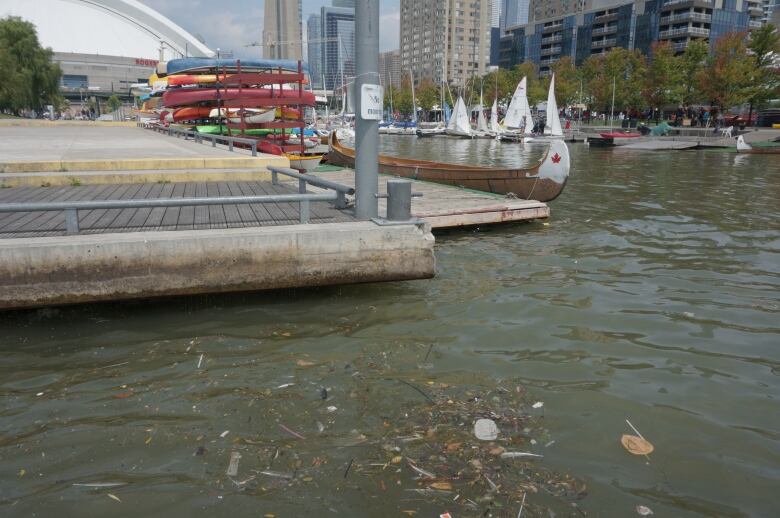Sewage flows into Toronto harbour regularly, says new advocacy group report
Lake Ontario Waterkeeper found nine 'hotspots' where sewage is released directly into the harbour

Sewage flows into Toronto's inner harbour regularly from nine "hotspots," states a new report from a local environmental advocacy group.
In a video released on Thursday, Lake Ontario Waterkeeperoutlined the findings of 10 sampling trips in the harbour throughout the summer. Samples were tested for E. coli, a bacteria indicating the presence of sewage.
Two-thirds of the more than 160samples collected failed to meet Ontario governmental standards for protection, the group said.
And, on one day, the team found E. colilevels near Bathurst Street and Queen's Quay West were 700 times higher than Ontario's swimming standards.
"Thebacteria levels were off the charts," saidKrystynTully, vice president of Lake OntarioWaterkeeper.

The Bathurst Quay area was identified as one of the nine 'hotspots' where sewage pollution enters Toronto Harbour due to outfalls connected to pipes containing sewage from homes and businesses.
According to the city, some of Toronto'solder areashave combined sewers in which there is only one pipe that carries both sewage andstormwater meaning rainfall can lead these pipes to overflow into local waterways.
The otherhotspotsidentified wereSpadinaQuay,HarbourfrontCanoe Centre, PawswayMarina, JackLaytonFerry Terminal, Sugar Beach Park, the harbour area near George Brown College, Parliament Street and the KeatingChannel.
Regular water quality monitoring needed, group says
The report findings highlighta need for regular water-quality monitoringin the harbour, and distribution of that informationto the public, Tully said.
Lake Ontario Waterkeeper hopesto sample regularly in 2017 and deliver harbour water-quality results to boaters through the group's Swim Guide app.
Toronto's beaches already have regular water monitoring throughout the summer months, which is shared online through SwimSafe.
From June to Labour Day, the city takes daily water samples from the supervised beaches across the city and tests for E. coli bacteria. When E. coli levels are high, Toronto Public Health posts warning signs against swimming.

But Tully said swimmers aren't the only people going in the water. Sailers, kayakers, and others have secondary contact with the water in the harbour throughout the year, she said.
"The fact that they're going directly into the water in the harbour without water quality information that's concerning," Tully said.
City committed to 'restoring Lake Ontario'
In a statement,Lou Di Gironimo, general manager for Toronto Water, said the city has not reviewed Lake OntarioWaterkeeper's data or the video report, and was not involved in collecting the samples.
The city is "committed to protecting and restoring Lake Ontario," Di Gironimo said in the statement.
Around $485 million has been invested into stormwater management projects since the Wet Weather Flow Master plan was adopted by council back in 2003, he added. Another $2.8 billion is slotted forthe plan over the next decade.
The city is also in the process of implementing a large-scale modernization of its wastewater facilities, with more than $12 billion budgeted over the next 10years to upgradewater and wastewater infrastructure.












_(720p).jpg)


 OFFICIAL HD MUSIC VIDEO.jpg)
.jpg)



























































































